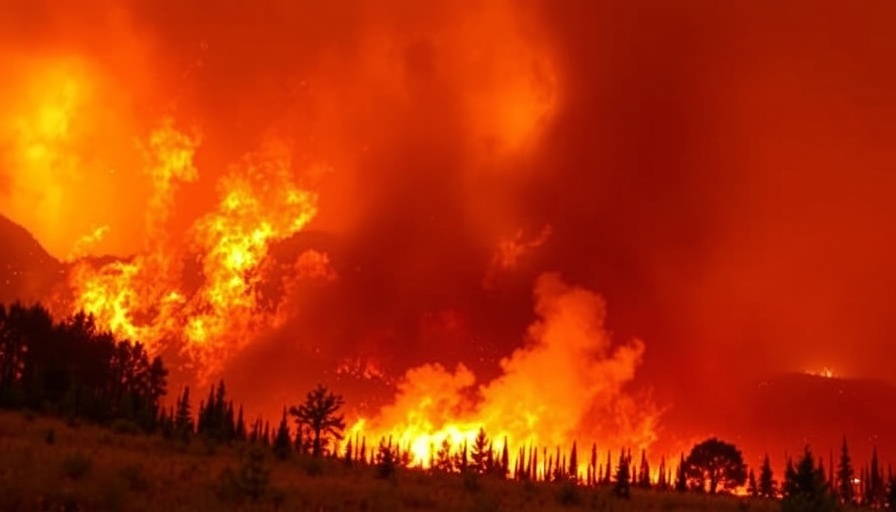
Canada's Wildfires: A National Crisis Affecting Air Quality
Wildfires across Canada continue to rage uncontrollably, prompting severe air quality alerts that extend into the United States. Currently, over 700 active wildfires are burning, with an alarming two-thirds classified as out-of-control, according to the Canadian Interagency Forest Fire Centre (CIFFC).
The Smoke's Reach: Air Quality at Detrimental Levels
On Monday, cities like Detroit, Montreal, and Toronto found themselves enveloped in smoke, with air quality rankings indicating some of the worst levels globally as reported by IQAir, a notable Swiss air-quality technology company. Vulnerable populations, including the elderly and those with preexisting health conditions, have been advised to remain indoors due to the health risks associated with the deteriorating air quality.
Factors Fueling the Flames: Understanding the Root Causes
Natural Resources Canada attributes the severity of the wildfires to a combination of warmer-than-average temperatures, drought conditions, and low soil moisture, all exacerbated by global heating effects. While some fires originated from natural causes, such as a recent brush fire ignited by an osprey dropping a fish onto a power line, the majority have been linked to increased environmental stresses.
2025: A Harbinger of Severe Wildfire Seasons Ahead?
This year marks a significant increase in wildfire activity, with 6,625,375 square meters of land burned—a staggering 82% increase compared to all of 2024. Monica Vaswani from Environment Canada warns that this trend signifies a “particularly bad wildfire season.” As temperatures continue to rise, the frequency and intensity of wildfires may indeed become more common.
Evacuations and Disruption: The Human Cost of Wildfires
In addition to air quality concerns, the wildfires have triggered widespread evacuations, particularly in vulnerable regions. The full evacuation order for the Nisichawayasihk Cree Nation in Northern Manitoba and the evacuation of more than 400 properties near Victoria, British Columbia, highlight the immediate human impact of these fires. Residents are urged to heed evacuation orders as the flames threaten communities and infrastructure.
How This Affects Homebuyers in Dumfries and Beyond
For homebuyers, sellers, and property investors in Dumfries, the wildfire situation has dual implications. First, those seeking property in regions prone to wildfires may need to consider enhanced safety features and sustainability measures to protect investments. Secondly, understanding the impact of environmental disasters on property values is essential for informed decision-making in today's market.
Conclusion: Taking Action to Protect Our Homes and Health
The ongoing wildfires in Canada serve as a stark reminder of the interconnectedness of environmental conditions and daily life, particularly in housing markets sensitive to such disasters. Homebuyers and investors should remain vigilant and proactive in seeking properties with eco-friendly designs and sustainable practices that can help mitigate the effects of future environmental challenges.
 Add Row
Add Row  Add
Add 





Write A Comment